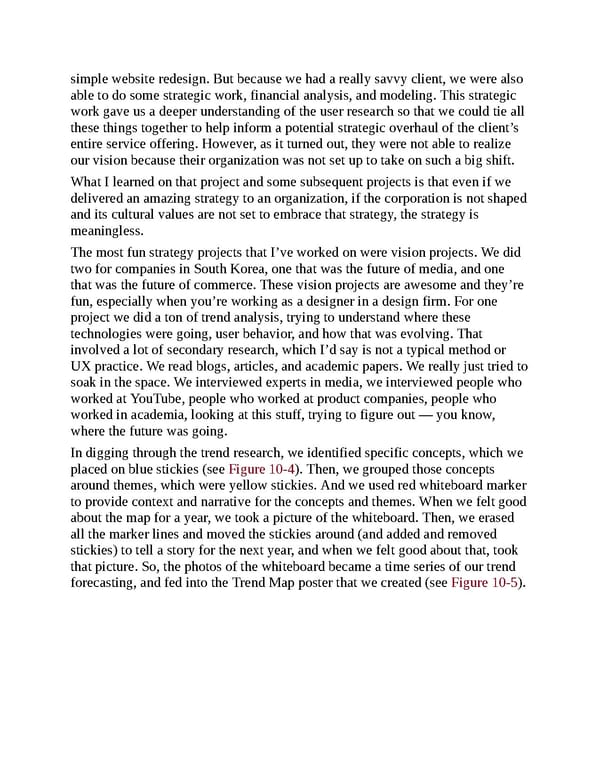simple website redesign. But because we had a really savvy client, we were also able to do some strategic work, financial analysis, and modeling. This strategic work gave us a deeper understanding of the user research so that we could tie all these things together to help inform a potential strategic overhaul of the client’s entire service offering. However, as it turned out, they were not able to realize our vision because their organization was not set up to take on such a big shift. What I learned on that project and some subsequent projects is that even if we delivered an amazing strategy to an organization, if the corporation is not shaped and its cultural values are not set to embrace that strategy, the strategy is meaningless. The most fun strategy projects that I’ve worked on were vision projects. We did two for companies in South Korea, one that was the future of media, and one that was the future of commerce. These vision projects are awesome and they’re fun, especially when you’re working as a designer in a design firm. For one project we did a ton of trend analysis, trying to understand where these technologies were going, user behavior, and how that was evolving. That involved a lot of secondary research, which I’d say is not a typical method or UX practice. We read blogs, articles, and academic papers. We really just tried to soak in the space. We interviewed experts in media, we interviewed people who worked at YouTube, people who worked at product companies, people who worked in academia, looking at this stuff, trying to figure out — you know, where the future was going. In digging through the trend research, we identified specific concepts, which we placed on blue stickies (see Figure 10-4). Then, we grouped those concepts around themes, which were yellow stickies. And we used red whiteboard marker to provide context and narrative for the concepts and themes. When we felt good about the map for a year, we took a picture of the whiteboard. Then, we erased all the marker lines and moved the stickies around (and added and removed stickies) to tell a story for the next year, and when we felt good about that, took that picture. So, the photos of the whiteboard became a time series of our trend forecasting, and fed into the Trend Map poster that we created (see Figure 10-5).
 UX Strategy: How to Devise Innovative Digital Products that People Want Page 292 Page 294
UX Strategy: How to Devise Innovative Digital Products that People Want Page 292 Page 294